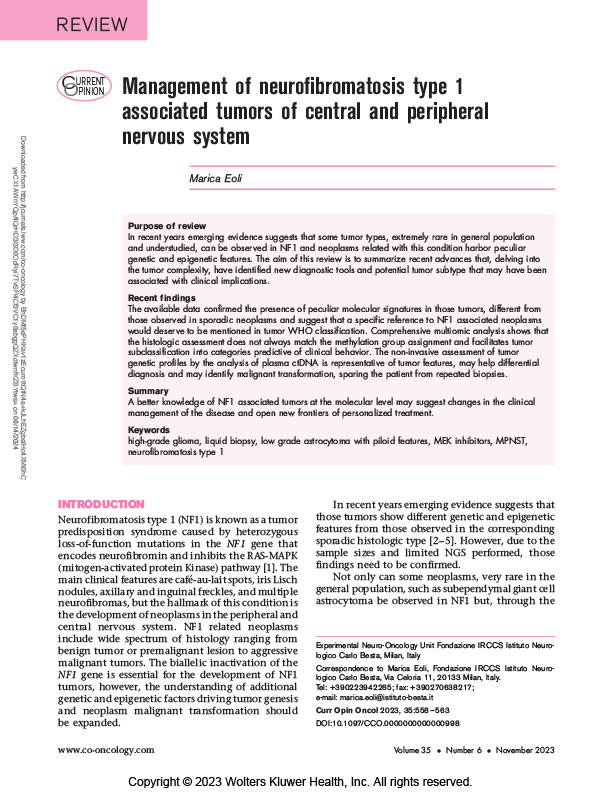Management of neurofibromatosis type 1 associated tumors of central and peripheral nervous system
November 2023
Abstract
Purpose of review
In recent years emerging evidence suggests that some tumor types, extremely rare in general population and understudied, can be observed in NF1 and neoplasms related with this condition harbor peculiar genetic and epigenetic features. The aim of this review is to summarize recent advances that, delving into the tumor complexity, have identified new diagnostic tools and potential tumor subtype that may have been associated with clinical implications.
Recent findings
The available data confirmed the presence of peculiar molecular signatures in those tumors, different from those observed in sporadic neoplasms and suggest that a specific reference to NF1 associated neoplasms would deserve to be mentioned in tumor WHO classification. Comprehensive multiomic analysis shows that the histologic assessment does not always match the methylation group assignment and facilitates tumor subclassification into categories predictive of clinical behavior. The non-invasive assessment of tumor genetic profiles by the analysis of plasma ctDNA is representative of tumor features, may help differential diagnosis and may identify malignant transformation, sparing the patient from repeated biopsies.
Summary
A better knowledge of NF1 associated tumors at the molecular level may suggest changes in the clinical management of the disease and open new frontiers of personalized treatment.

